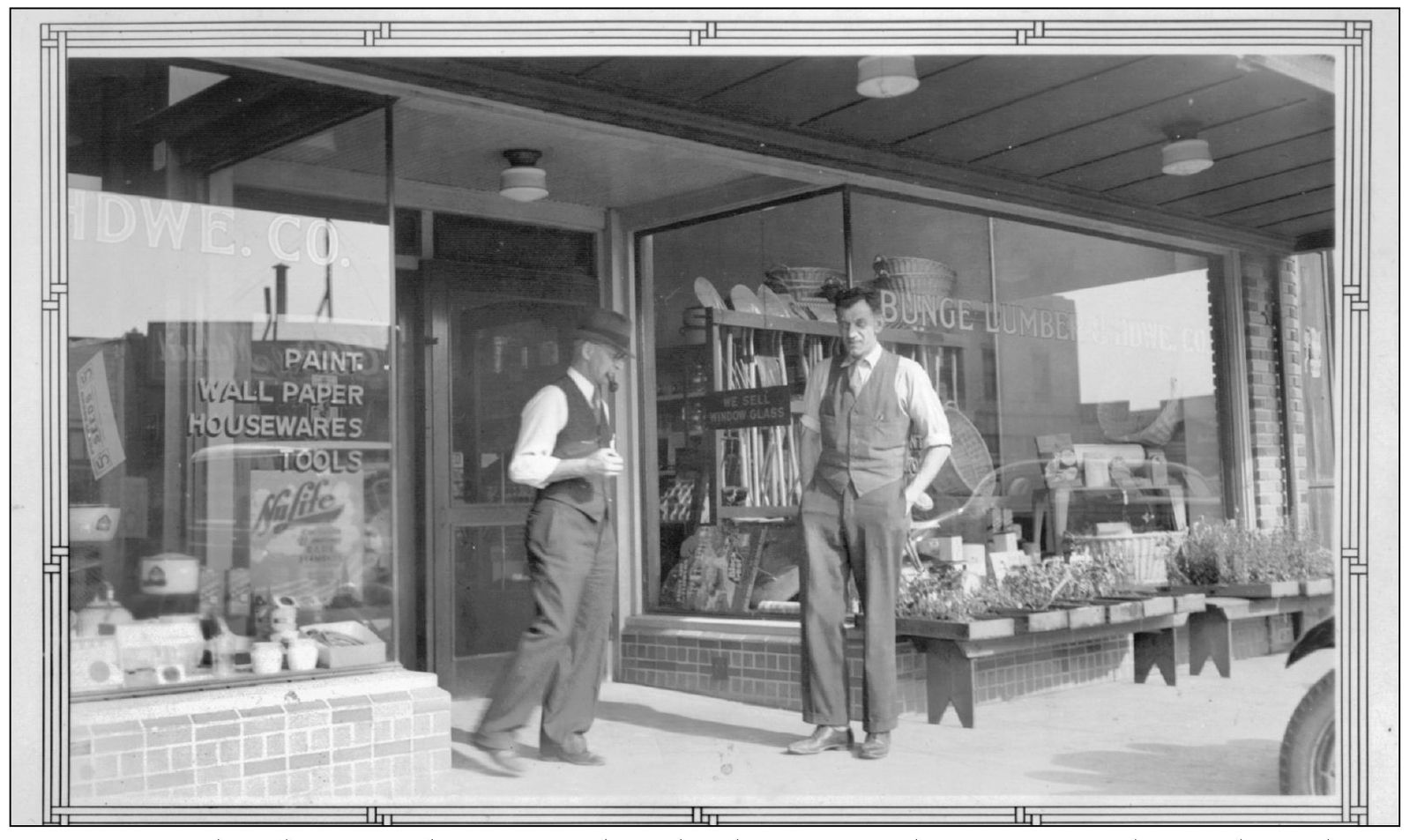Six
WHITE CENTER

The White Center business district is shown covered in snow, looking south on Delridge Way SW from one block north of SW Roxbury Street, around 1960. The sign for Chubby and Tubby (now Walgreens) is on the left; the Swallow Tavern and Hughes Tru-Value Hardware are visible on the right. White Center was named with a flip of the coin between George White and Hiram Green.

Streetcar tracks cross the three-way intersection (Sixteenth Avenue SW, Delridge Way SW, and SW Roxbury Street), looking south at the White Center main business district around 1920. In 1916, the White Center Theater and Apothecary House building on the right were constructed by Hiram Green, who also owned 5 acres from SW Ninety-eighth Street to SW Roxbury Street. Although businesses have changed over the years, the same buildings still anchor the corner. (Courtesy MOHAI, 83.10.3062.4.)

Above is a view looking north on SW Roxbury Street in 1948, Deldridge Way SW is to the left of the stoplight and Sixteenth Avenue SW to the right. The Trinagle building nestled between was originally a single-story building. The Rozella Building, named after Hiram Green’s daughter, is behind. SW Roxbury Street is the border between the Seattle city limit and unincorporated King County.

Nelson Van Zile stands behind the counter of the Van Zile Confectionary at Sixteenth Avenue SW and SW Roxbury Street around 1920. His well-appointed establishment included a lunch counter and soda fountain in addition to candy treats. The store was next door to the White Center Theater.

Originally built by Hiram Green in 1916, the theater was owned by George Srigley, founder of the White Center News. In 1937, dispirited after being attacked by local “toughs,” he sold the theater to printer Walter Coy. Coy remodeled and modernized it, renaming it the White Center Grand (shown below in 1938). In 1942, Coy remodeled and upgraded the theater again, renaming it the Center Theater. The main entrance and lobby were relocated around the corner to 1617 SW Roxbury Street. The theater closed in 1955. (Below courtesy Puget Sound Regional Archives.)


Beginning in the 1880s, the timber around White Center was felled and the subdivided acreage sold. Farming, logging, and shingle mill operations worked the land through the 1920s. This photograph was taken at Twenty-fourth Avenue SW and SW Cloverdale Street in the 1920s.

The White Center Feed Store on Sixteenth Avenue SW would supply local farmers with needed feed and seed. Roof framing for the Southgate Roller Rink can be seen in the background. It opened in 1937.

A retired streetcar is used for a bus shelter on Sixteenth Avenue SW, north of SW Roxbury Street, around 1934. Initially the line was the Highland Park and Lake Burien Railway that started service in 1912 to the area north of Lake Burien. The City of Seattle took over the service to White Center in October 1913 and operated it until service was discontinued in 1933. The Rozella Building is on the left, and the empty lot for the Chubby and Tubby store (now Walgreens) is on the right. (Courtesy MOHAI, PI 27181.)

Two men in shirtsleeves and vests stand in the doorway of the Bunge Lumber and Hardware Company at 9616 Sixteenth Avenue SW. Small neighborhood stores carrying a wide array of merchandise from construction materials to household goods and bedding plants were typical of the time.

The original Southgate Roller Rink, at 9639 Sixteenth Avenue SW (shown above in 1948), was built by Hiram Green in 1920 as a boxing arena. In 1934, Hiram’s daughter Ethel Green and William “Pop” Brown bought the building, converting it three years later from a live music and dancing venue to a roller rink. “Seattle’s Friendly Rink” became one of the most popular entertainment spots in Seattle. (Above courtesy Puget Sound Regional Archives.)


Miss Southwest Seattle and her court of local beauties are shown aboard a parade float around 1940. Several southwest neighborhoods are represented—visible sashes are White Center, Arbor Heights, and Highland Park.

Three competitors approach the finish line during the Pancake Festival pancake flipping race at Sixteenth Avenue SW on August 11, 1956. The Hideaway Tavern, Roxbury Furniture, White Center Hardware, and White Center Shoe Service can be seen on the right. (Courtesy MOHAI, 1986.5.1662.)

The White Center Lions Club chamber music ensemble and singing youngsters, led by a conductor in clown attire, perform for the crowd during the Mardi Gras festival on July 17, 1948. Elliott Couden, White Center businessman and a founding member of the Southwest Seattle Historical Society, is visible far right, standing in the bowler hat.

Harold Hopkins (right), a past president of the White Center Lions Club, presents the ownership papers to the lucky winner of a new Ford automobile, the prize in a White Center Boy’s Club fund-raising raffle around 1948. The White Center Boys Club had 1,000 junior members ages 11 to 20 and was funded by a collaboration between the Lions Club, the Eagles, Highland Park PTA, Holy Family, and the White Center Commercial Club.

Busey’s Drive-In Restaurant was built and owned by H. Richard Busey between 1941 and 1955. The Triple X drive-in, which featured carhops, was a westside favorite. The business was converted to a dine-in restaurant in 1955. It was sold to Marv Mosely in 1975 and remains as Marv’s Broiler.

Note the food prices posted in the windows of this busy A&P food store at 10210 Sixteenth Avenue SW in 1960. Pay N’ Pak Hardware later replaced the A&P. Pay N’ Pak remodeled and enlarged the building considerably. It is now McLendon Hardware.